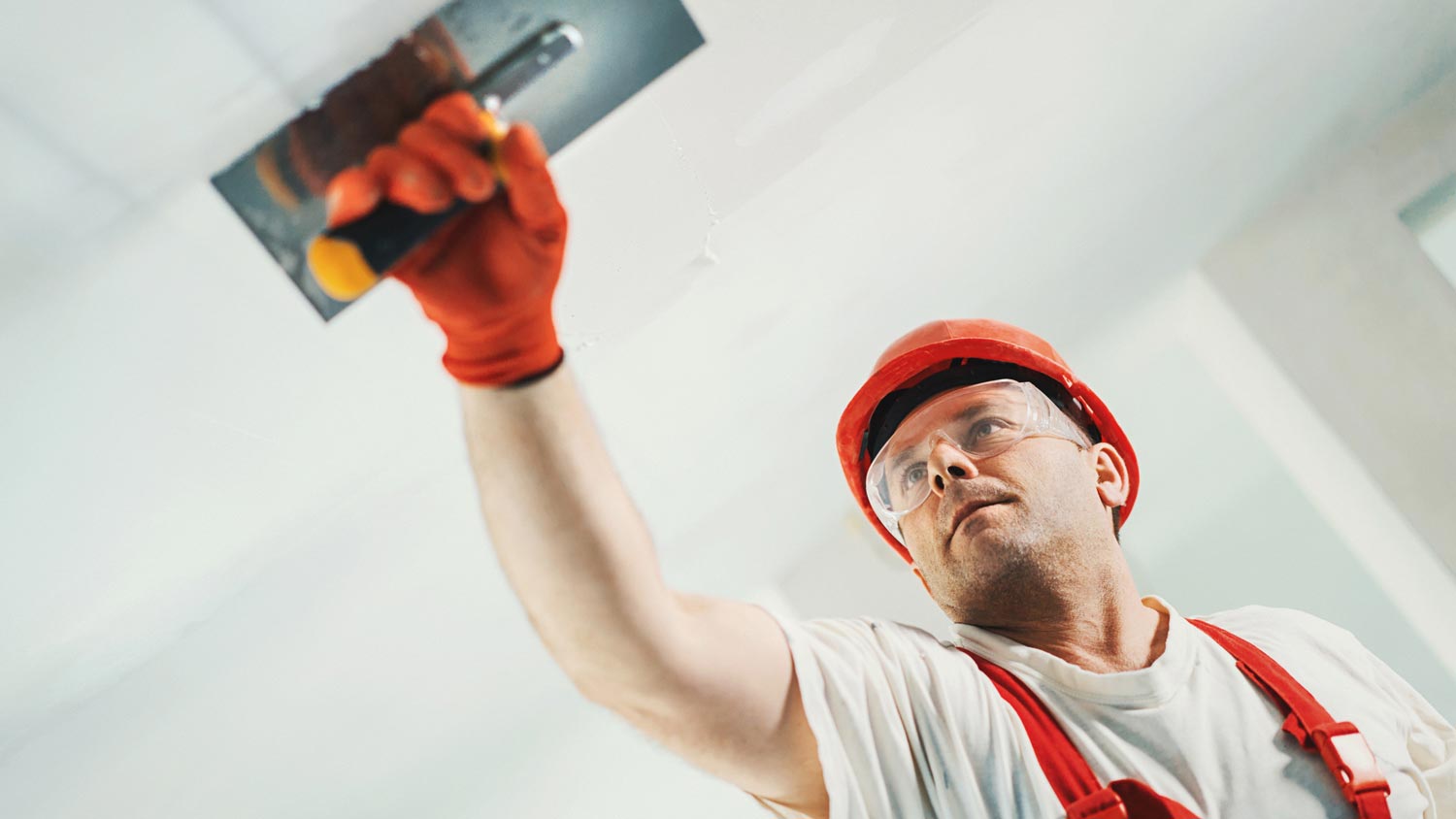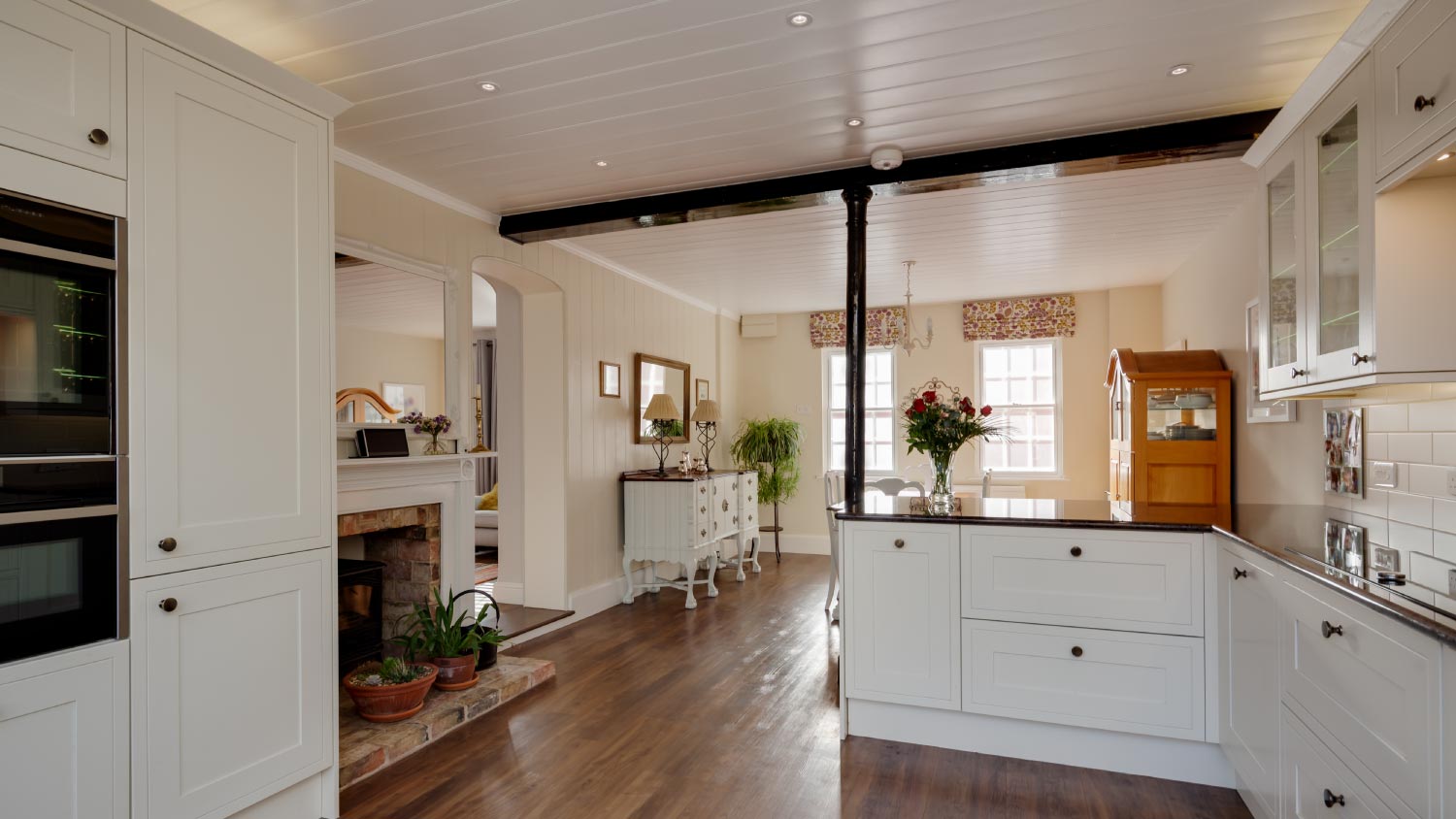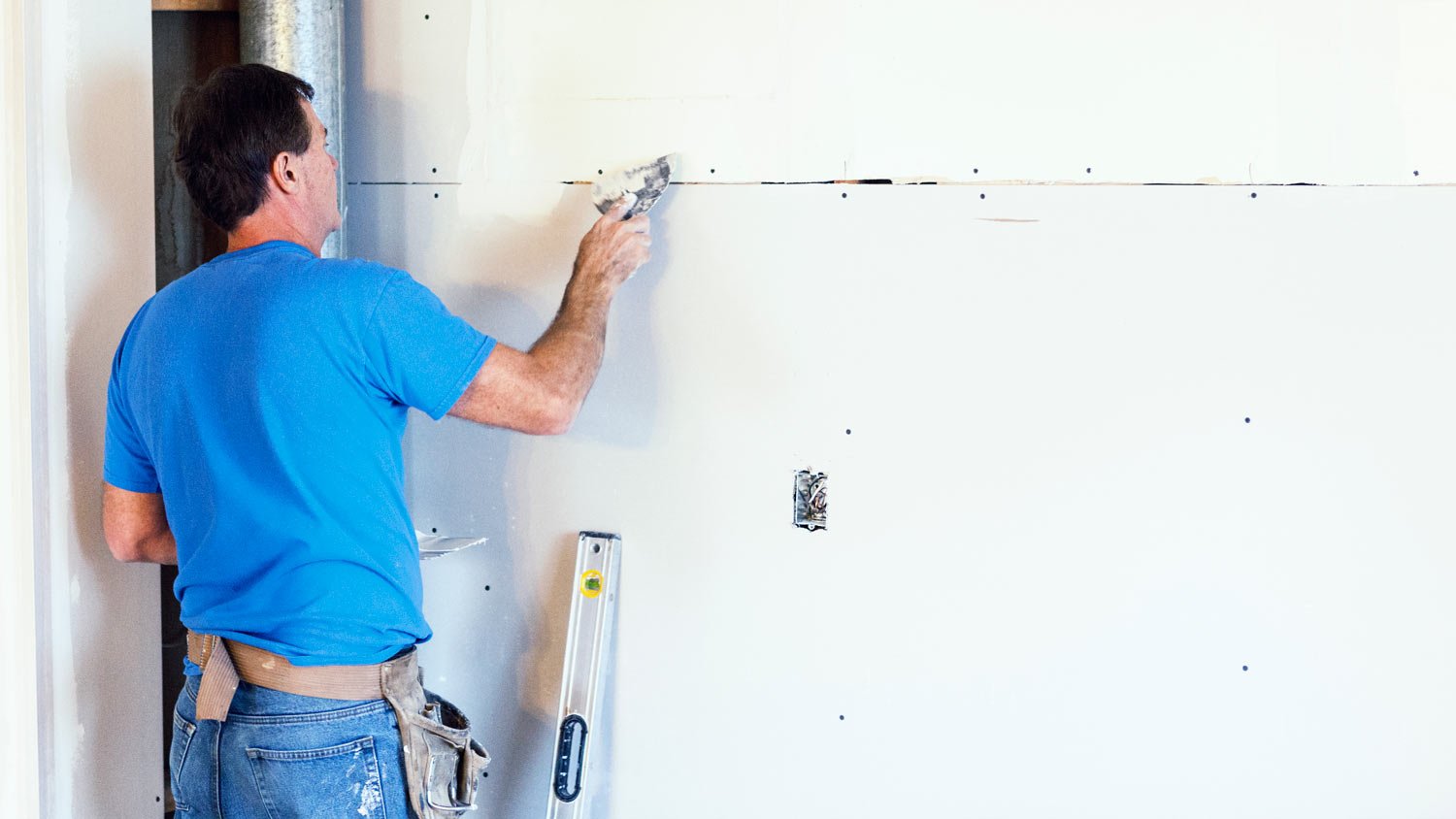
Skim coating drywall is a great alternative to replacement, and is often more affordable. Use this guide to estimate the cost to skim coat walls in your home.
Corners make a bigger impact than you think


Aesthetics are the biggest difference between rounded and square corners.
Rounded lends itself to modern styles while square is best for traditional homes.
Rounded corners are generally easier to maintain, but are slightly more expensive.
The choice between rounded vs. square drywall corners is not only a matter of personal preference but rather a critical decision that can greatly impact the overall appearance and practicality of your space. While rounded corners bring a soft elegance with their graceful curves, square corners exude a timeless, structured appearance that conveys a sense of tradition. Read on to learn the significant differences between these two styles to help you make a well-informed choice for your upcoming construction or renovation project.
While the general appearance of rounded vs. square drywall corners is the most obvious difference, there are a few other factors to bear in mind.
| Type of Difference | Rounded Corners | Square Corners |
|---|---|---|
| Appearance | Curved profile | 90-degree angle |
| Durability | Less likely to chip | Prone to damage |
| Installation | Labor-intensive | Easy to install |
| Maintenance | Easy to clean | Frequent cleaning |

As the names suggest, the biggest difference between rounded and square drywall corners is how they look within the home and the way they incorporate the style.
Rounded corners, also known as bullnose corners, have a curved or rounded profile. They create a softer look in rooms throughout a home. Square corners feature a sharp 90-degree angle to create a clean and crisp appearance.
Rounded corners are a preferred design for homeowners seeking a contemporary or modern interior design. The style features soft curves and fluid lines that create a sense of openness in the home. On the other hand, square corners are popular with traditional or formal home styles. The design complements architectural details like crown molding and wainscoting while maintaining a sense of order and symmetry in a room.
When opting for a color scheme, rounded corners work best in homes that will feature a single color not only in a room but throughout the home. While it's more challenging to create a seamless transition to different colors, this is a benefit for homeowners who prefer a minimalist style. With square corners, homeowners have the flexibility of creating accent walls or changing colors from room to room in shared spaces.

To the naked eye, viewing the difference in appearance is most noticeable. However, the varying factors to consider from installation to maintenance make these two drywall corner options different.
Installing rounded corners is a more labor-intensive process, requiring additional steps. For example, a flexible corner bead or a bullnose corner bead is needed to accommodate the curved shape. Square corners are typically easier to install. They are created using a standard corner bead and are well-suited for professional installations and homeowners. If you're looking to DIY the project, gather up these essential drywall tools, and you will be able to manage the project on your own.
With the added complexity of installing rounded drywall corners comes an increase in cost due to extra materials and labor. The drywall installation cost for square corners will be slightly less expensive.
The curved shape of rounded corners makes them less likely to chip or dent when impacted. This can be an advantage in high-traffic areas or homes with active children or pets. With more exposed edges, square corners are more susceptible to chipping or damage from accidental bumps or impacts. This can be mitigated with properly installed corner bead reinforcement.
Rounded corners tend to accumulate less dust and dirt, making them much easier to clean. Square corners, on the other hand, may require frequent cleaning, especially if they have decorative trim that can easily collect dust.
From average costs to expert advice, get all the answers you need to get your job done.

Skim coating drywall is a great alternative to replacement, and is often more affordable. Use this guide to estimate the cost to skim coat walls in your home.

Installing beadboard ceilings is a great DIY project. Learn what to expect cost-wise from this project, whether removing or covering a popcorn ceiling.

Drywall texture can create an attractive finish and add dimension to your home’s walls. This guide breaks down the factors that influence the cost to texture drywall.

Can you put drywall over drywall to cover old, damaged or cracked plaster walls? Read our guide to determine if this is the right solution for your walls.

Got a hole in the wall? Learn how to spackle a hole in the wall and have it looking like new in almost no time.

Thick gaps and extra joint compound can alter the look of drywall. So, should drywall be butt up against a wall? Review this guide for seamless installation.